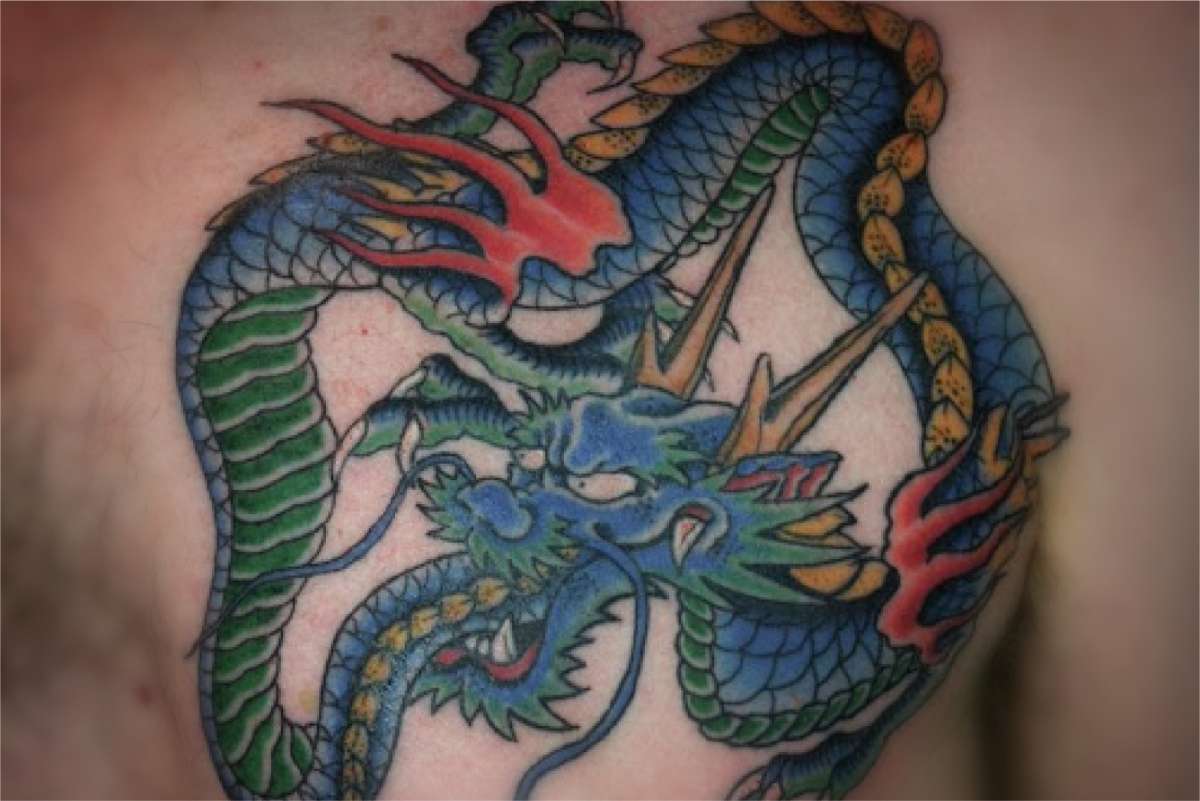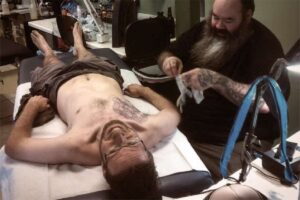
I got my first tattoo when I was 45, so it can hardly be explained as an act of youthful rebellion. By that point I had seen a Jungian analyst for about 6 years and had made it through some very difficult personal, relational and professional transitions. It seemed totally illogical to me at the time and I spent months debating with myself. Should I or shouldn’t I? Would I regret it? Is it a silly and unnecessary expense? But, somehow, getting a tattoo felt like a meaningful way to honor my personal journey. I wasn’t sure about the design, size or placement, but I had no question about the symbol I wanted; I knew it had to be a dragon, because the dragon already had accompanied me on the journey for my whole adult life.
The dragon first appeared when I was 20 years old, in my dorm room at the Mannes College of Music in New York. I recently had begun to explore Buddhism so, when both my roommates were out of town for the weekend, my introverted self was excited to read and meditate without the possibility of being interrupted or distracted. I sat quietly and proceeded with a simple breathing meditation; paying attention to body sensations and gently acknowledging my thoughts, I labeled them and let them go. Gradually, my awareness of the meditation process fell away and shifted into a more experiential, dreamlike state. A “waking dream” is the only way I can describe it, although I was fully conscious. I became a dragon suspended in space. I felt very calm at first, but gradually a tremendous surge of energy culminated in a violent explosion and I/the dragon was shattered to bits. All that remained was a glowing point of light that I intuitively understood to be simultaneously a star and a diamond, implying that whatever was happening to me was both giant/universal and small/personal. I/the dragon slowly reassembled, the energy grew again, and the explosion happened a second time. This process continued about six or seven times and, like waking up from a startling dream, I pulled myself out of it, completely confused and bewildered by what I had just experienced. I didn’t tell anyone about the experience for 15 years.

After I made my decision, I found a wonderful tattoo artist and all-around great guy, Gabriel Bayles. I did not anticipate the level of intimacy and trust involved in the process. I still remember my nervousness and his concern for my comfort and pain level. We had a very open conversation. I shared some of the difficult psychological challenges that culminated in the tattoo, and he shared some of his journey that led to becoming a tattoo artist. Like all meaningful human exchanges, it involved vulnerability and risk, and had many similarities to a therapy session. In retrospect, I realize that we had enacted a kind of sacred ritual. In the following weeks and months, I began to notice subtle differences in myself, both physically and psychologically. I felt the dragon – this symbol that had been a part of my imagination for my entire adult life – shift from an idea in my mind to something more tangible. I felt him on my chest and, as a result, I stood up straighter. I had the unexpected outcome of feeling that I had accomplished something. I had a different perspective on the first 45 years of my life, like I had crossed a bridge into a body and life that were more my own. It was like the montage scene about two-thirds into a movie, looking backward with a kind of nostalgia and release that made moving forward more possible.
In a letter Jung wrote, “A symbol is the sensuously perceptible expression of an inner experience. It must be expressed one way or another, for therein is revealed its immanent vital force. It wants to step over into visible life, to take concrete shape.” I felt some of the dragon’s vital force — but now, instead of an abstract idea, it was part of me.
We cannot deny the power that symbols have over us. Just think about cultural symbols like wedding rings, religious symbols like crosses, yarmulkes or hijabs, or political symbols like flags and government buildings. Tattoos are not for everyone, but — by paying attention to the symbols that both attract and repel us — we can learn a lot about ourselves. Personal symbols emerge in dreams, in our projections onto others, in our responses to art, literature and movies. Whenever we are emotionally affected in a way that can’t easily be reduced to words, a symbol is at work. The point is not only to understand these symbols more consciously, but also to feel whatever they inspire in us more deeply. Write down your dreams, journal, paint, intentionally daydream, actively fantasize and be curious about your responses. Jung wrote, “The recognition of the intrinsic value of a symbol leads to constructive truth and helps us to live; it inspires hopefulness and furthers the possibility of future development.”
Collected Papers on Analytical Psychology CW 4 ¶ 679